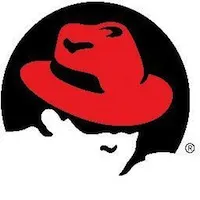Thought Leaders in Cloud – Radhesh Balakrishnan, Red Hat
Thought leaders in Cloud is a series where we get you insights from the most influential leaders of the cloud computing world. As a part of this series, we bring an exclusive interview with Radhesh Balakrishnan, GM for Virtualization and OpenStack at Red Hat.

Tell us about yourself
As the General Manager for Virtualization and OpenStack at Red Hat, am responsible for business strategy, product management, partner strategy and product marketing for Red Hat Enterprise Virtualization, RHEL OpenStack Platform and Red Hat Cloud Infrastructure products & related technologies.
Red Hat has invested in Hypervisor (KVM), Hypervisor Management (RHEV), cloud orchestration (OpenStack), Cloud Management Platform (CloudForms) and PaaS (OpenShift). How do you see them come together?
We see our enterprise customers progressing along a continuum toward cloud adoption across the infrastructure and application platform layers as well planning toward their eventual convergence. From an infrastructure perspective, to map to the first stage in the quest for efficiency, our traditional virtualization management offering i.e. Red Hat Enterprise Virtualization (RHEV) builds on KVM to deliver an open alternative. As a next step, the combination of RHEV and CloudForms offers the next logical stop of getting to a managed virtualization environment, with the added bonus that CloudForms brings in the flexibility to manage resources in vSphere as well as public cloud environment.
One can view elastic cloud as a third stop in the journey and to enable that, we're engineering the combination of RHEL, KVM and enterprise-hardened OpenStack to deliver RHEL OpenStack Platform. And as a last stop in the infrastructure journey, to help bridge the traditional virtualization and elastic cloud with a single pane of management, we offer Red Hat Cloud Infrastructure.
In a similar vein, on the application platform side, a journey can be had starting with our JBOSS middleware offerings to our OpenShift PaaS offering. Now, with the increased focus on Dev-Ops we're seeing convergence of infrastructure and platform journey and in this context, we're excited about being uniquely positioned to offer truly open set of choices to our customers.
Analysts say that OpenStack is not enterprise-ready. What’s your take on this?
Our view is that OpenStack is maturing very fast and we're excited about working with customers and partners to shape the enterprise experience. Our customers are relentless in demanding us to deliver on what they have come to expect from us - an enterprise-ready offering with a lifecycle and a certified partner ecosystem that they can bet on - and we're working hard to meet this need. The good news is that we see this as the perfect opportunity to play to our strength as a open source software provider with a track record and strength in taking open source innovation from "projects" to "products" that are enterprise-ready by definition.

If you look at our enterprise OpenStack journey so far, since the global availability of RHEL OpenStack Platform and RHCI offerings in July 2013, we've had the opportunity to engage closely with 100+ early adopter customers across the globe. While there is indeed varied maturity of functionality across OpenStack components, we're already seeing our customers, particularly in Telco, Financial and Public Sector, in the midst of rolling out pilot deployments and partnering with us to define their roadmap. It's also worth highlighting that we refreshed our offerings in January and we're partnering with industry leaders such as Dell, Cisco and Intel to enable and drive enterprise adoption of OpenStack. Net-net, we see the stars aligning to make 2014 the marquee year for enterprise OpenStack adoption, fueled by a vibrant partner ecosystem.
With many OpenStack choices available, why should customers choose RHEL OpenStack Platform?
From an enterprise perspective, RHEL OpenStack Platform offers the differentiated value along three dimensions – a) engineered with the combination of RHEL, KVM and enterprise-hardened OpenStack by the #1 contributor b) backed by a truly open vendor i.e. without any proprietary/shadow code tree etc., with a lifecycle and world-class support and c) supported by the world's largest OpenStack partner ecosystem.
In addition, a whole another dimension of technology differentiation is Red Hat's ability to offer a complete solution stack across Storage (Red Hat Storage), PaaS (OpenShift) and CMP (CloudForms), all not surprisingly, truly open solutions. I've also had some of our Telco customers highlight the fact that we're NOT in the business of standing up a public cloud on our own being a strategic differentiator to them.
Red Hat started the IaaS journey with CloudForms even before embracing OpenStack. How do they integrate?
Our CloudForms offering has been enhanced with a robust feature set stemming from the acquisition of ManageIQ in late 2012. Since then, one of the key functionality areas we've been focused on is around managing RHEL OpenStack Platform. With CloudForms 3.0 release, we delivered the ability to provision and retire resources on RHEL OSP via CloudForms, just like on say RHEV or vSphere environments and we will continue to enrich the integration in the coming releases.
How will Red Hat Storage (GlusterFS) integrate with OpenStack storage?

Are you targeting the hosting providers to offer RHEL based public cloud?
Yes, in addition to enterprise Private Clouds, we're also engaging with hosting providers and Telcos as part of our Certified Cloud Provider program.
SDN is becoming the key differentiation for the IaaS offerings. What’s Red Hat doing in that space?
The Red Hat Enterprise Linux OpenStack Platform provides integrated SDN capabilities in the form of Open vSwitch, a multi-layer virtual switch designed to enable massive network automation through programmatic extension, while still supporting standard management interfaces and protocols (e.g. NetFlow, sFlow, SPAN, RSPAN, CLI, LACP, 802.1ag). We're working with the leading SDN providers such as VMWare, Juniper and Nuage Networks to certify their solutions to the RHEL OpenStack Platform. In addition, true to our mission of being a catalyst in driving open innovation, we're also participating in the Open Daylight project as a platinum/founding member.
What are the partner opportunities with Red Hat IaaS platform?
Our OpenStack offerings truly represent significant opportunity for partners of all types. For hardware providers, the opportunity is to partner across compute,storage and networking to offer a peace of mind value proposition to the customers via certified solutions. For System Integrators, given the scope and complexity at hand, providing architecting, integration and implementation services is a huge opportunity. And needless to stress,delivering applications designed for & predicated on an elastic cloud is a huge opportunity for ISVs as well. In a nutshell, opportunities abound for partners to jointly deliver solutions to help our customers get to an OpenStack-based "as a Service" implementation that meets their business needs.
We thank Radhesh for sharing insights on Red Hat’s cloud strategy. Stay tuned for the next interview with another thought leader!







